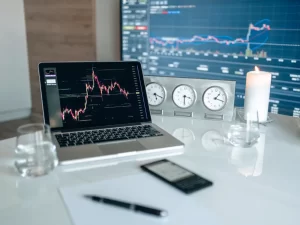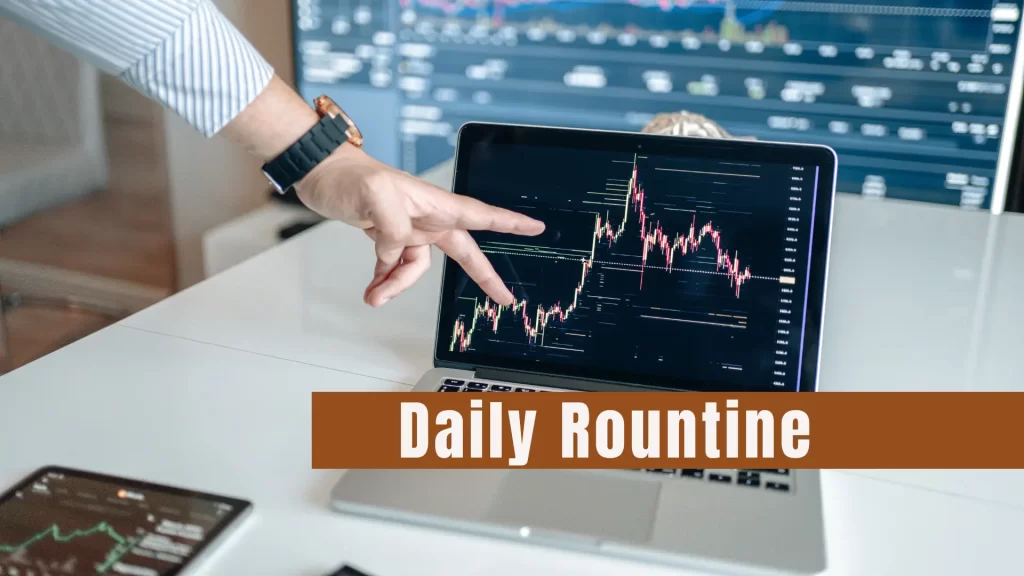Many newcomers to automated Forex trading mistakenly believe that deploying an Expert Advisor (EA) is a "set and forget" operation. The allure of a robot tirelessly generating profits while you sleep is powerful, but the reality of successful EA trading involves far more than simply attaching a program to a chart. A successful EA trader isn't just someone who owns a profitable robot; they are a diligent system manager, consistently monitoring, adapting, and performing routine checks to ensure their automated strategies remain effective and, crucially, safe.
Just like a high-performance race car needs regular maintenance and a skilled driver to navigate changing track conditions, a Forex EA requires attention to thrive in the dynamic market. Neglecting this oversight can quickly turn a profitable EA into a devastating liability.
This article will outline the daily routine of a successful EA trader, detailing the essential checks, monitoring practices, and strategic considerations that go beyond simply running the software. By adopting these habits, you transform from a passive observer into an active manager, significantly increasing your chances of long-term profitability and capital preservation in automated Forex trading.
Daily Routine of a Successful EA Trader
Many newcomers to automated Forex trading mistakenly believe that deploying an Expert Advisor (EA) is a "set and forget" operation. The allure of a robot tirelessly generating profits while you sleep is powerful, but the reality of successful EA trading involves far more than simply attaching a program to a chart. A successful EA trader isn't just someone who owns a profitable robot; they are a diligent system manager, consistently monitoring, adapting, and performing routine checks to ensure their automated strategies remain effective and, crucially, safe.
Just like a high-performance race car needs regular maintenance and a skilled driver to navigate changing track conditions, a Forex EA requires attention to thrive in the dynamic market. Neglecting this oversight can quickly turn a profitable EA into a devastating liability.
This article will outline the daily routine of a successful EA trader, detailing the essential checks, monitoring practices, and strategic considerations that go beyond simply running the software. By adopting these habits, you transform from a passive observer into an active manager, significantly increasing your chances of long-term profitability and capital preservation in automated Forex trading.
The Myth of "Set and Forget"
Before diving into the routine, it's crucial to dispel the most common misconception about EAs: that they operate autonomously without any human input once installed. While EAs handle trade execution, the market is a constantly evolving entity. Economic calendars, geopolitical events, liquidity shifts, and even broker conditions can impact an EA's performance. A truly successful EA trader understands this dynamic and actively manages their automated systems.
The Daily Checklist of a Successful EA Trader
A successful EA trader's day doesn't necessarily involve hours of staring at charts, but rather a structured approach to verification, analysis, and maintenance.

Morning Check (Upon Waking / Before Major Sessions Open)
- Verify VPS/Server Status:
- Purpose: Ensure your trading environment is stable and connected. Most EAs run on a Virtual Private Server (VPS) to guarantee 24/7 operation and minimize latency.
- Action: Log in to your VPS. Check that your MetaTrader platform is running, logged in, and displaying a "connection" status (green bars in the bottom right corner). Look for any error messages or disconnections.
- Why it matters: A disconnected platform or a downed VPS means your EA isn't trading, potentially missing opportunities or, worse, failing to manage open trades.
- Confirm EA Operation & "smiley face":
- Purpose: Visually confirm the EA is active on all intended charts.
- Action: On each chart where an EA is attached, check for the "smiley face" icon in the top right corner. This indicates the EA is running and allowed to trade. Ensure "AutoTrading" (or "Algo Trading" in MT5) is enabled on the platform's toolbar.
- Why it matters: Sometimes EAs can stop due to minor glitches, platform restarts, or accidental clicks.
- Review Open Trades and Floating P/L:
- Purpose: Get a snapshot of current market exposure and unrealized profit/loss.
- Action: Check the "Trade" tab in your MetaTrader terminal. Note the number of open trades, their currency pairs, lot sizes, and the current floating profit or loss.
- Why it matters: This helps you quickly identify if any trade is experiencing an unusual drawdown or if the total floating loss is approaching your comfort limits.
- Check Economic Calendar for High-Impact News:
- Purpose: Identify upcoming economic events that could cause significant market volatility and potentially disrupt EA performance.
- Action: Consult a reliable economic calendar (e.g., Forex Factory, Myfxbook). Note down high-impact news releases (usually marked red or with three stars) for the day, including the currency pairs they affect and the exact times.
- Why it matters: Many EAs are not designed to handle sudden, erratic market movements caused by news. A successful EA trader might temporarily disable their EAs before such events and re-enable them after the volatility subsides, or adjust risk parameters.
- Review Broker Spreads and Commissions:
- Purpose: Ensure trading costs are within acceptable limits for your EA's strategy.
- Action: Quickly check current spreads on the pairs your EA trades. Compare them to your EA's backtested average spreads.
- Why it matters: Widening spreads (especially during news or low liquidity periods) can significantly impact scalping or high-frequency EAs, turning profitable trades into losses.
Download EA's of interest
Mid-Day/Periodic Check (Optional, but Recommended)
- Monitor
Equity Curve & Drawdown:
- Purpose:
Track the overall performance of your account and identify any unusual or
prolonged drawdowns.
- Action:
Check your account history or use an account monitoring tool (like
Myfxbook) to review your equity curve. Note the current drawdown
percentage.
- Why
it matters: While drawdowns are normal, a sudden, steep, or prolonged
drawdown beyond historical expectations might indicate an issue with the
EA, a shift in market conditions that the EA is not adapting to, or
overly aggressive settings.
- Check
for Broker Announcements/Server Maintenance:
- Purpose:
Stay informed about any broker-specific issues that could affect trading.
- Action:
Check your broker's website or email announcements for scheduled server
maintenance, holiday trading hours, or other important notices.
- Why
it matters: These can cause temporary disruptions or impact EA
operation.
- Purpose: Track the overall performance of your account and identify any unusual or prolonged drawdowns.
- Action: Check your account history or use an account monitoring tool (like Myfxbook) to review your equity curve. Note the current drawdown percentage.
- Why it matters: While drawdowns are normal, a sudden, steep, or prolonged drawdown beyond historical expectations might indicate an issue with the EA, a shift in market conditions that the EA is not adapting to, or overly aggressive settings.
- Purpose: Stay informed about any broker-specific issues that could affect trading.
- Action: Check your broker's website or email announcements for scheduled server maintenance, holiday trading hours, or other important notices.
- Why it matters: These can cause temporary disruptions or impact EA operation.
End of Day / Weekly Review
- Analyze
Trading Performance (Daily/Weekly):
- Purpose: Evaluate the EA's performance objectively and identify trends.
- Action: Review the trading history for the day/week. Key metrics to look at
include: - Net Profit/Loss: Overall monetary gain or loss.
- Number of Trades: How active was the EA?
- Win Rate: Percentage of winning trades.
- Profit Factor: Total profit / Total loss (should be >1).
- Maximum Drawdown: The largest peak-to-trough drop in equity.
- Average Win/Loss: The average profit of winning trades versus the average loss of losing trades.
- Why
it matters: This data is crucial for understanding if your EA is performing as expected, if its edge is diminishing, or if adjustments are needed. Keep a trading journal for your EA's performance.
- Assess
Market Conditions vs. EA Strategy:
- Purpose: Determine if the current market environment is favorable or unfavorable for your EA's strategy.
- Action: Briefly review the dominant market conditions (trending, ranging, volatile, quiet) for the pairs your EA trades.
- Why it matters: If your EA is a trend follower and the market is ranging, or a scalper during low liquidity, its performance might suffer. You might consider temporarily disabling it or switching to another EA better suited for the current conditions.
- Consider
Parameter Optimization (Less Frequent, e.g., Monthly/Quarterly):
- Purpose:
Refine EA settings to adapt to changing market conditions.
- Action:
Based on performance analysis and market shifts, consider running
optimization tests on your EA (preferably on a demo account or strategy
tester) to find more suitable parameters.
- Why
it matters: Markets change, and an EA that performed perfectly a year
ago might need tweaks. However, avoid over-optimization (curve fitting).
- Software & VPS Maintenance:
- Purpose:
Ensure the underlying technology is running smoothly.
- Action:
Check for MetaTrader updates, VPS software updates, and ensure sufficient
disk space. Restart your VPS and MetaTrader periodically to clear any
potential glitches.
- Why
it matters: Outdated software or a cluttered VPS can lead to
performance issues.
- Backup Your Settings & Data:
- Purpose:
Protect your configurations and historical data.
- Action:
Regularly back up your EA's .set files, your MetaTrader profile, and any
relevant trading journals or data.
- Why
it matters: In case of technical failure, you can quickly restore
your setup without losing valuable information.
- Purpose: Evaluate the EA's performance objectively and identify trends.
- Action: Review the trading history for the day/week. Key metrics to look at
include: - Net Profit/Loss: Overall monetary gain or loss.
- Number of Trades: How active was the EA?
- Win Rate: Percentage of winning trades.
- Profit Factor: Total profit / Total loss (should be >1).
- Maximum Drawdown: The largest peak-to-trough drop in equity.
- Average Win/Loss: The average profit of winning trades versus the average loss of losing trades.
- Why it matters: This data is crucial for understanding if your EA is performing as expected, if its edge is diminishing, or if adjustments are needed. Keep a trading journal for your EA's performance.
- Purpose: Determine if the current market environment is favorable or unfavorable for your EA's strategy.
- Action: Briefly review the dominant market conditions (trending, ranging, volatile, quiet) for the pairs your EA trades.
- Why it matters: If your EA is a trend follower and the market is ranging, or a scalper during low liquidity, its performance might suffer. You might consider temporarily disabling it or switching to another EA better suited for the current conditions.
- Purpose: Refine EA settings to adapt to changing market conditions.
- Action: Based on performance analysis and market shifts, consider running optimization tests on your EA (preferably on a demo account or strategy tester) to find more suitable parameters.
- Why it matters: Markets change, and an EA that performed perfectly a year ago might need tweaks. However, avoid over-optimization (curve fitting).
- Purpose: Ensure the underlying technology is running smoothly.
- Action: Check for MetaTrader updates, VPS software updates, and ensure sufficient disk space. Restart your VPS and MetaTrader periodically to clear any potential glitches.
- Why it matters: Outdated software or a cluttered VPS can lead to performance issues.
- Purpose: Protect your configurations and historical data.
- Action: Regularly back up your EA's .set files, your MetaTrader profile, and any relevant trading journals or data.
- Why it matters: In case of technical failure, you can quickly restore your setup without losing valuable information.

Key Principles for a Successful EA Trader
- Risk Management is Paramount: Always define and adhere to strict risk management rules before deploying any EA. This includes per-trade risk (e.g., 1-2% of capital), maximum daily/weekly/monthly drawdown limits, and overall portfolio risk.
- Realistic Expectations: No EA will generate constant profits without drawdowns. Understand that losing streaks are part of the game.
- Continuous Learning: Stay updated on market dynamics, trading strategies, and MQL programming (if you develop your own EAs).
- Patience and Discipline: Resist the urge to constantly tinker with a well-performing EA during minor fluctuations. Trust your backtesting and strategy.
- Start Small & Demo First: Always test a new EA or significant parameter changes on a demo account for an extended period before moving to a live account, and even then, start with a small lot size.

